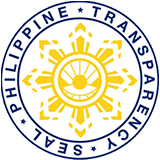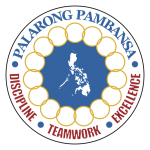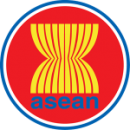Profile of the Division of Zamboanga del Sur
The Zamboanga del Sur Schools Division is considered as the largest division in Region IX in terms of number of public elementary & secondary schools. The Division has 32 school Districts; 17 are located in the 1st Congressional District while 15 are in the 2nd Congressional District.
It has 669 public elementary schools, 127 public secondary schools and 6 integrated schools. On the other hand, there are only 34 private elementary schools, 44 private secondary schools and 6 private integrated schools which are duly recognized by DepEd.
In keeping with the DepEd policy of empowering the District/School Administrators, the Division established a functional mechanism for effective and efficient management of the elementary & secondary programs and projects through the establishment of Quality Learning Circles (QuaLCi) with the following objectives:
- Monitor the implementation of division policies and facilitate the dissemination of DepEd and division memoranda and circulars;
- Strengthen the camaraderie and partnership among the elementary &secondary school teachers and officials for both public and private schools for a more relevant and productive educational system; and
- Cluster districts for easier supervision and implementation of Programs and Projects. Each QuaLCi is supervised by Education Program Supervisors and Senior Education Program Specialists designated as QuaLCi Surrogate Supervisors assisted by the Public School District Supervisors.
Profile of the Province
Geographical Location and its Topography
The Province of Zamboanga del Sur is occupying the southern section of the Zamboanga Peninsula that forms the western part of the island of Mindanao. It is located within the longitude 122˚ 54´ to 123˚ 40´ east and latitude 7˚ 22´ to 8˚ 20´ north. It is bounded on the north by the province of Zamboanga del Norte, on the south by the Moro Gulf, on the Southwest by the Province of Zamboanga Sibugay. On the east, it is bounded by the Province of Misamis Occidental, the Panguil Bay and a portion of Lanao del Sur Province.
Stretching northward from Sibugay Province on the Southwest and running along the northern boundary onward to Salug Valley, on the east is a mountainous area. The coastal plains are narrow strips extending regularly from the southwest, then spreading into the flat lands and reaching the coastal plains of Baganian Peninsula in the southeast.
Land Area and its Uses and Classification
The province has a total land area of 4,477.36 square kilometers with Dumingag having the biggest area among all the municipalities with an area of 297.75 sq. km. followed by Bayog, Pagadian City, Midsalip and Mahayag. The smallest inarea are the municipalities of Vincenzo Sagun, Pitogo, Tabina, Guipos, and Josefina which are less than 100 sq. km.
The existing diversified land uses are not based on its suitability in terms of soil types and climate, but rather on man’s choice of activities introduced by the government agencies and private individuals. There are five major categories of land uses: Built-up areas, Industrial zone, Tourism Zone, Production Lands and Protection Land as covered by the National Integrated Protected Area System.
Two major classifications of lands in the province as identified by the DENR are the Alienable and Disposable Lands and the Forestlands.
Economic Situation of the Province
The province of Zamboanga del Sur is known primarily for its agri-fishery industry, hence, majority of the employed persons belong to this industry. This scenario prompted the Provincial Government to create employment and livelihood opportunities in the countryside and facilitate export employment.
Among the occupational groups, agricultural fishery and forestry sectors posted the biggest group representing almost 50% of the total employed labor population. The slight reduction of these agricultural workers from 50.35% in 2004 to 49.58% in 2005 is attributed to the training offered by TESDA and other technical/vocational schools in order to produce competitive goods and services.
Historical and Political Evolution
Zamboanga del Sur was derived from the Malay word Jambangan, meaning a pot or place of flowers. It was known as the capital of the Moro province which comprises of five districts namely: Cotabato, Davao, Sulu, Lanao and Zamboanga. In 1940, these districts became individual provinces and Zamboanga City became the capital of the Zamboanga Province. Soon after the Second World War, the provincial capital was transferred to Dipolog. Thereafter, the Municipality of Molave was created as the provincial capital of the Province of Zamboanga by virtue of R. A. 286 dated June 16, l948. Zamboanga del Sur was carved out from the former Zamboanga Province that encompassed the entire peninsula in Southwestern Mindanao on September 17, 1952 by virtue of Republic Act 711. As the 52nd province of the Republic, it originally consisted of 11 towns which later expanded into 42 municipalities and one city-Pagadian as its capital.
It was subdivided into three congressional districts with 11 municipalities and one city in the first, 15 municipalities in the second, and 16 municipalities in the third. In 1990, Executive Order 429 reorganized the administrative set-up of Region IX and identified Pagadian City as the new Regional Center.
The political developments in February 2001 saw another major change in the territorial jurisdiction of Zamboanga del Sur. Its inhabitants voted to create a new province out of the third congressional district named it Zamboanga Sibugay Province. The creation of the said province has left only 26 municipalities and 681 barangays as the component of the Province of Zamboanga del Sur.
Table 1. Number of Barangays per Municipality and per District
| District I | District II | ||
| Municipality | No. of Barangays | Municipality | No. of Barangay |
| 1. Aurora | 44 | 1. Bayog | 28 |
| 2. Dumingag | 44 | 2. Dimatalit | 24 |
| 3. Josefina | 14 | 3. Dinas | 30 |
| 4. Labangan | 25 | 4. Dumalinao | 30 |
| 5. Mahayag | 29 | 5. Guipos | 17 |
| 6. Midsalip | 33 | 6. Kumalarang | 18 |
| 7. Molave | 25 | 7. Lakewood | 14 |
| 8. Ramon Magsaysay | 27 | 8. Lapuyan | 26 |
| 9. Sominot | 19 | 9. Margosatubig | 17 |
| 10. Tambulig | 31 | 10. Pitogo | 15 |
| 11. Tukuran | 25 | 11. San Miguel | 18 |
| 12. San Pablo | 28 | ||
| City | 13. Tabina | 15 | |
| Pagadian City | 54 | 14. Tigbao | 18 |
| 15. Vincenzo Sagun | 14 | ||
| Sub-total | 369 | 312 | |
| Zamboanga del Sur total no. | of Barangays = 681 | ||





